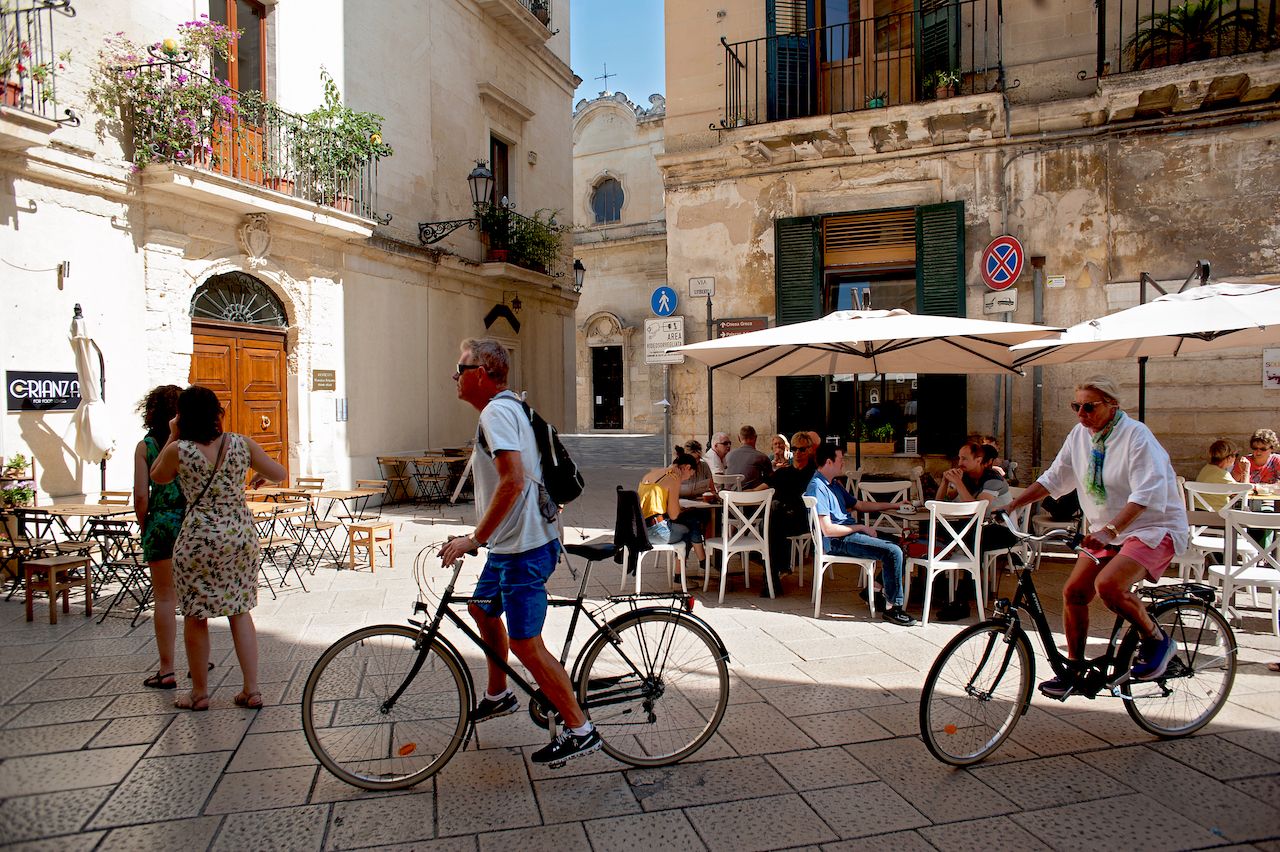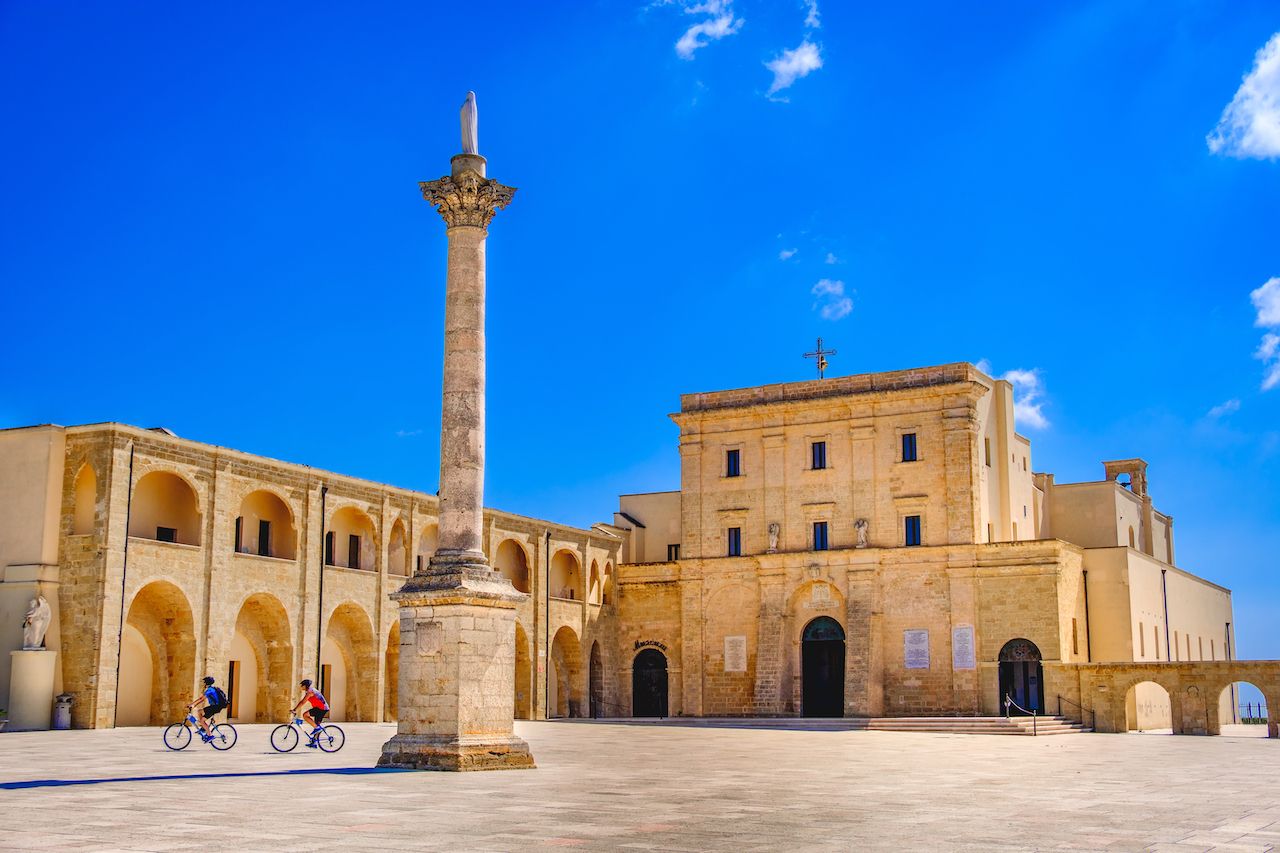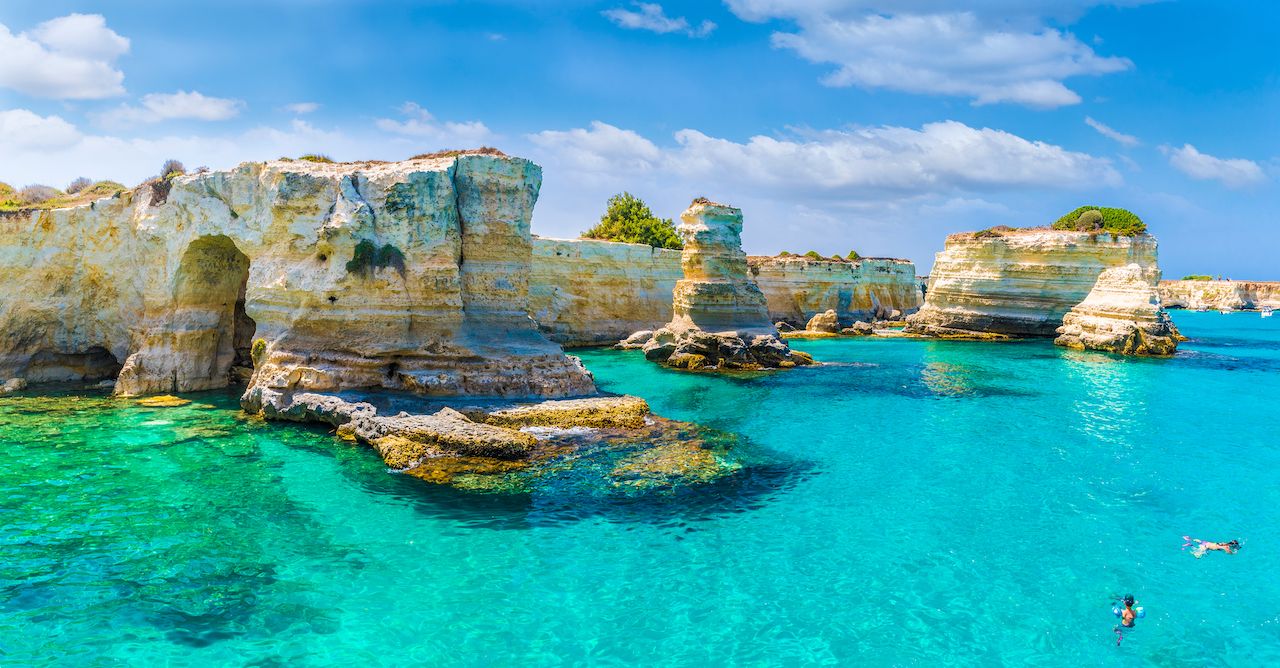The Mediterranean’s Ionian and Adriatic seas lap against the rugged coastlines and pristine beaches of southern Italy’s Puglia region, an under-tracked stretch of land occupying the narrow heel of Italy’s boot. Puglia’s lush landscape belies an ancient history of pirates and gladiators, and ingredients sprout in every direction (even on cliff-sides and cracks in the road!) that come together in unforgettable dishes. It has cliffs carved into ethereal rock formations, pale sandy beaches, glistening turquoise water, and a chill, authentic vibe.
There is no better way to explore the Puglia region, also known as Apulia or Salento, than circumnavigating it on two wheels. Since the area is frequented mostly in July and August by Italian holidaymakers, fall is the prime time to visit. It’s also a cooler season to embark on this lovely four-day cycling loop of the heel — which begins and ends in the city of Lecce, on the eastern coast of the heel.





